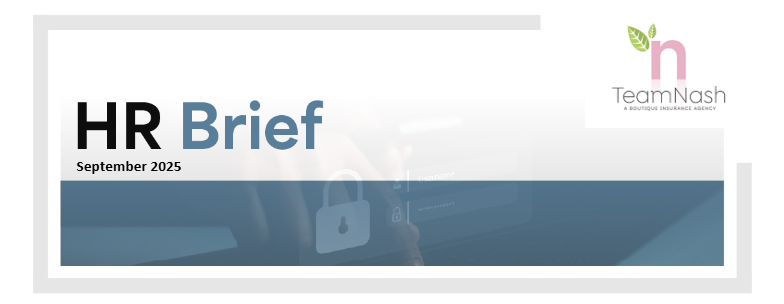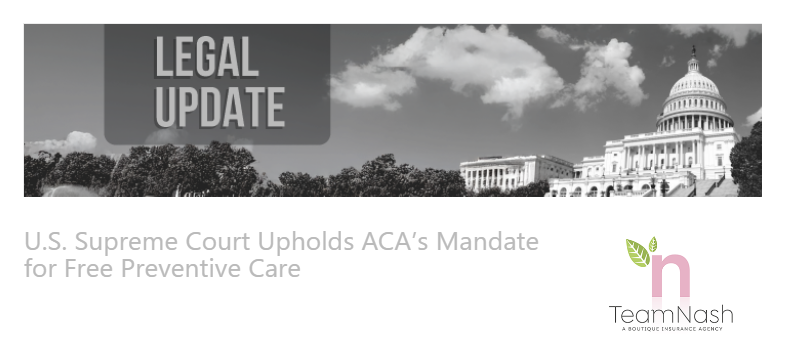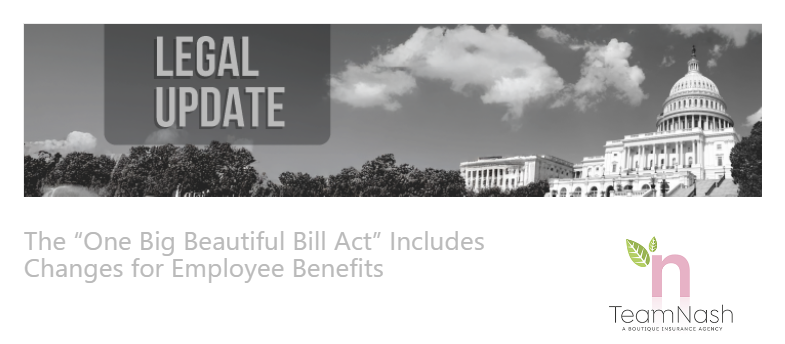We are pleased to share the HR Brief Newsletter – September 2025, which provides an important update on the E-Verify Status Change Report and details about the OBBB Act’s recent elimination of taxes on qualified tips and overtime compensation. For more information, please refer to the content linked below in this email. We hope you find these updates helpful for your organization.
E-Verify Status Change Report Updated to Include Document Number
The U.S. Citizenship and Immigration Services recently announced that the Status Change Report will include an additional “Revoked Document Number” field to help employers determine whether an employee’s employment authorization document (EAD)
presented when completing the Employment Eligibility Verification form (Form I-9) and used to create their E-Verify case is the revoked EAD in the report. If the EAD has been revoked, the employer must reverify the employee by completing Supplement B of
Form I-9.
If an employer has a current employee who appears on the Status Change Report, the employer should compare the employee’s EAD card number used for Form 1-9 to the Revoked Document Number field in the report to determine if the employer must reverify the employee’s employment authorization. For example, if the employee’s EAD used for Form I-9, which was used to create their E-Verify case, is the same number listed in the
Revoked Document Number filed, then the employee’s EAD is revoked, and the employer
must reverify the employee with a different acceptable List A or C document using Form I-9 Supplement B. However, if the employee’s EAD used for Form 1-9 is different than the number
listed in the Revoked Document
Number field, the employee’s EAD is not revoked, and the employer does not need to reverify the employee’s employment authorization until the EAD expires.
Employer Takeaway
Employers should regularly generate the Status Change
Report to identify E-Verify cases
created with a revoked EAD and reverify each employee by completing Supplement B of Form I-9 if their EAD was
revoked. Employees may still be employment authorized based on another status or provision of law and may provide other acceptable Form I-9
documentation to demonstrate employment authorization.
Employers can review the EAD Revocation Guidance for E- Verify Employers for more information about the Status Change Report.
OBBB Act Eliminates Taxes on Qualified Tips and Overtime Compensation
President Donald Trump recently signed a tax and spending bill, commonly referred to as the One Big Beautiful Bill (OBBB) Act, into law. The OBBB Act would allow certain workers an above-the- line deduction for “qualified tips” and “qualified overtime compensation” for taxable years beginning after Dec. 31, 2024, and ending for taxable years beginning after Dec. 31, 2028.
Tip Deductions
Section 70201 of the OBBB Act creates a new above-the-line tax deduction for qualified tips. Individuals must earn $150,000 or less ($300,000 if married filing jointly) in 2025 to be eligible for the tip deduction. The maximum deduction for tip income is capped at $25,000 per year, and the deduction only applies to cash tips, which include tips that are charged and tips received under a tip- sharing agreement.
To qualify for the tip deduction, individuals must work in occupations where receiving tips is customary (e.g., servers, bartenders, hotel staff, hairstylists) on or before Dec.
31, 2024. Qualified tips must be reported on statements furnished to the individual as required under the Internal Revenue Code (e.g., Form W-2) or on Form 4137. The OBBB Act does not change the requirement that employees and employers report all tips to the IRS.
Overtime Deductions
Section 70202 of the OBBB Act establishes a new above-the- line tax deduction for qualified overtime compensation. The maximum deduction for overtime income is capped at $12,500 per year ($25,000 per year if married filing jointly). The deduction decreases for those earning over $150,000 per year. Employers must include the total amount of qualified overtime compensation as a separate line item on employees’ Form W-2. Qualified tips cannot be claimed as qualified overtime compensation.
Employer Next Steps
Employers may need to adjust their payroll systems to accurately track and report qualifying tips and overtime compensation on employees’ Forms W-2. Contact us for more
resources.







Recent Comments